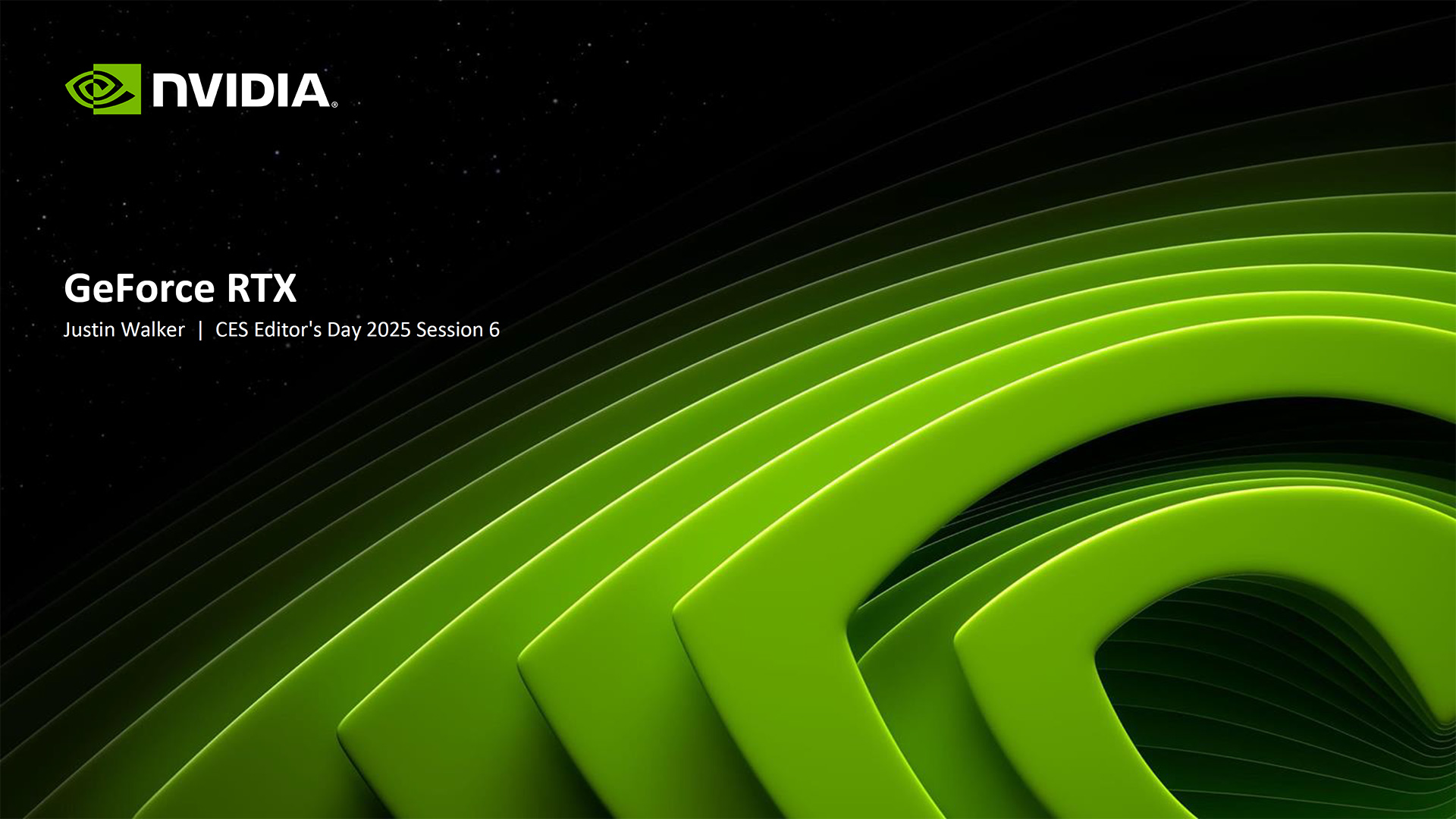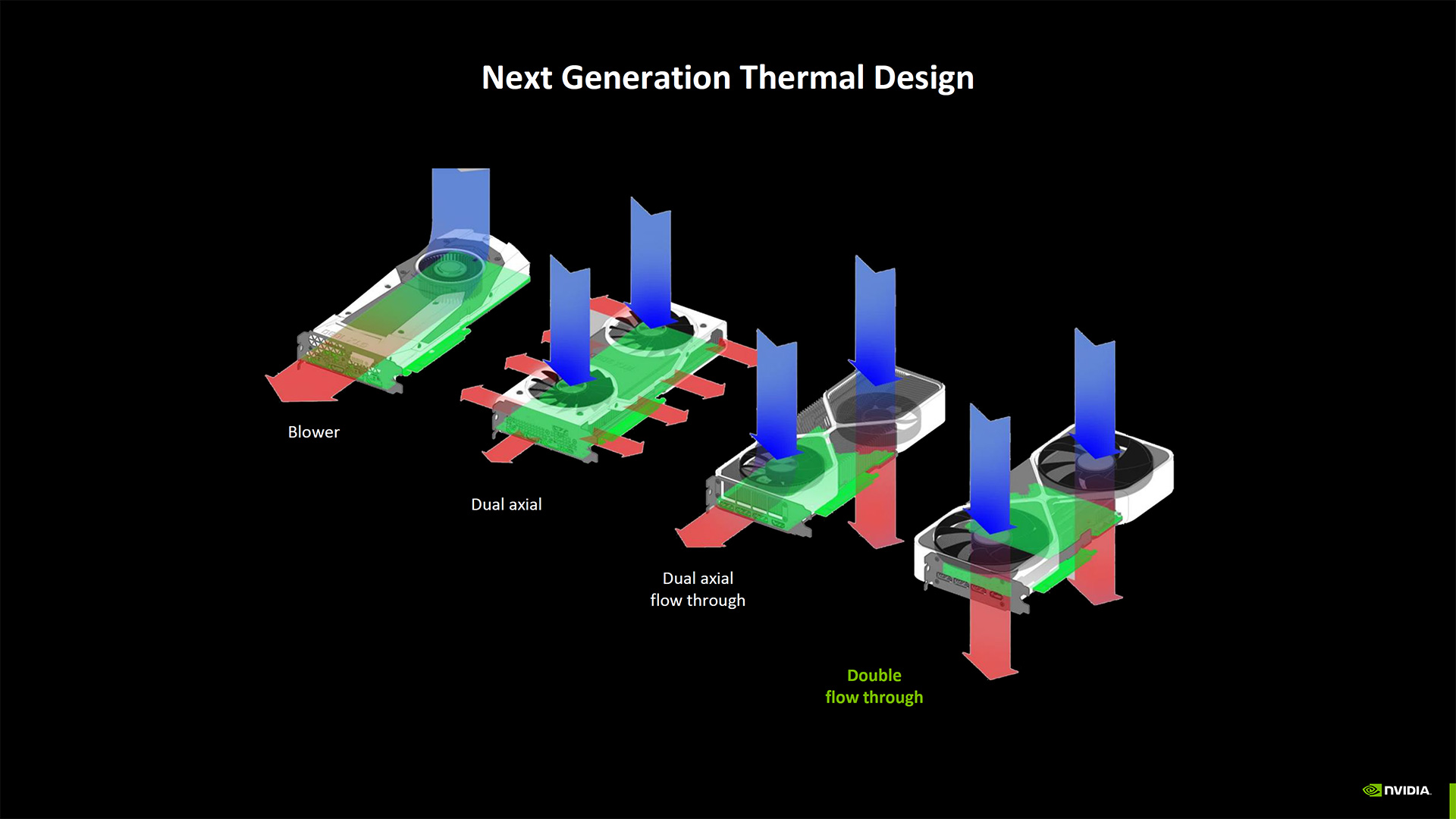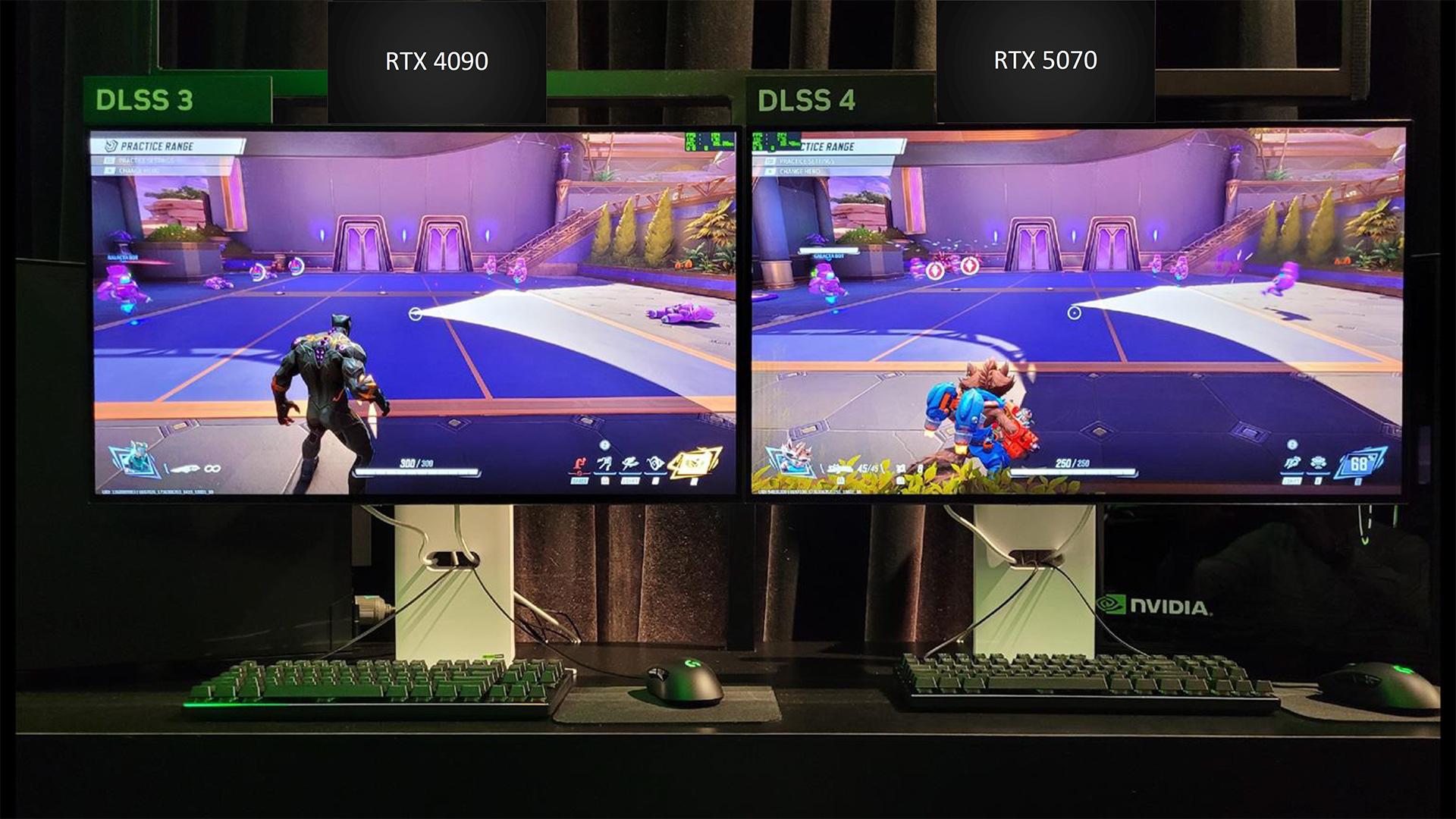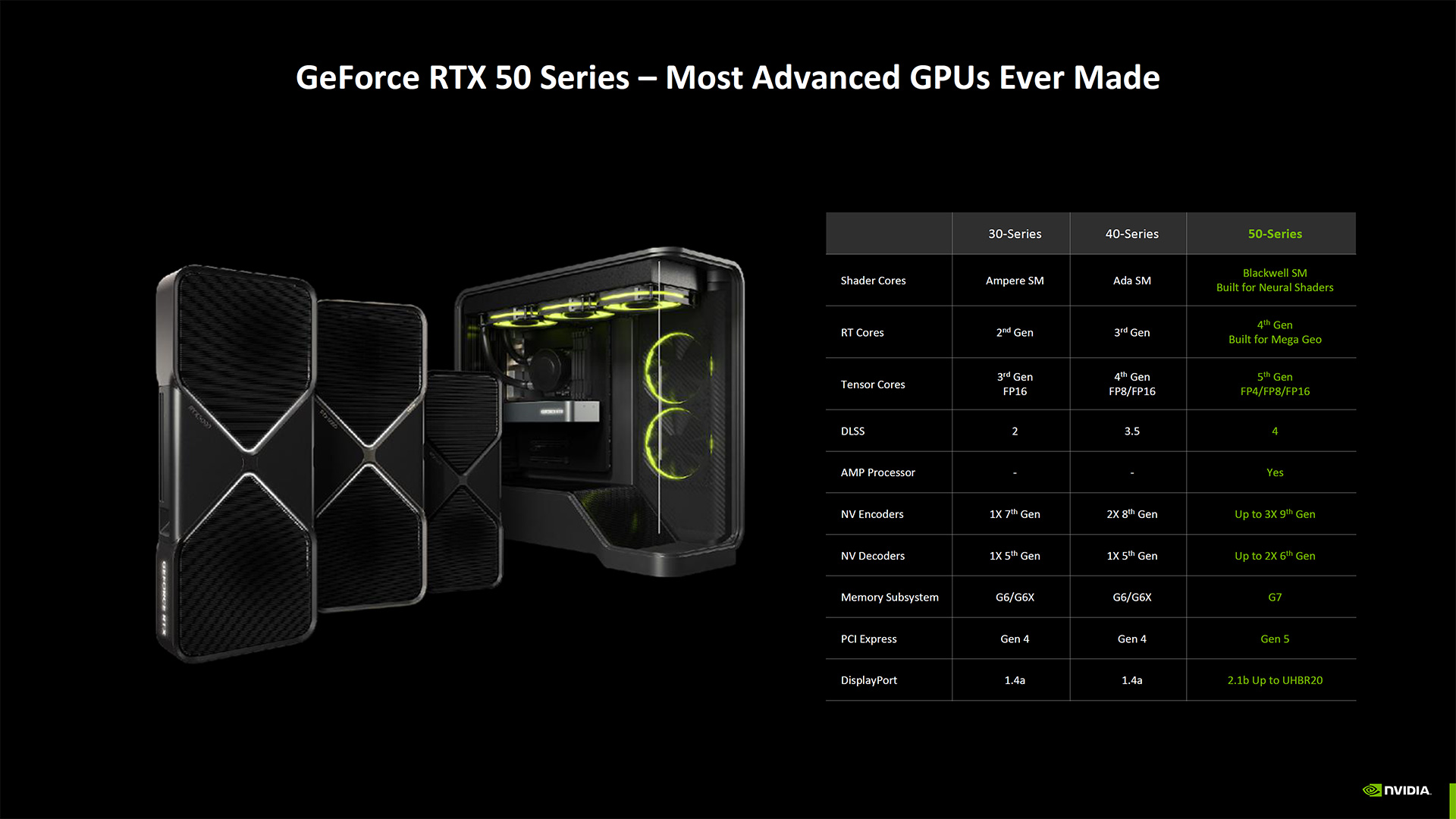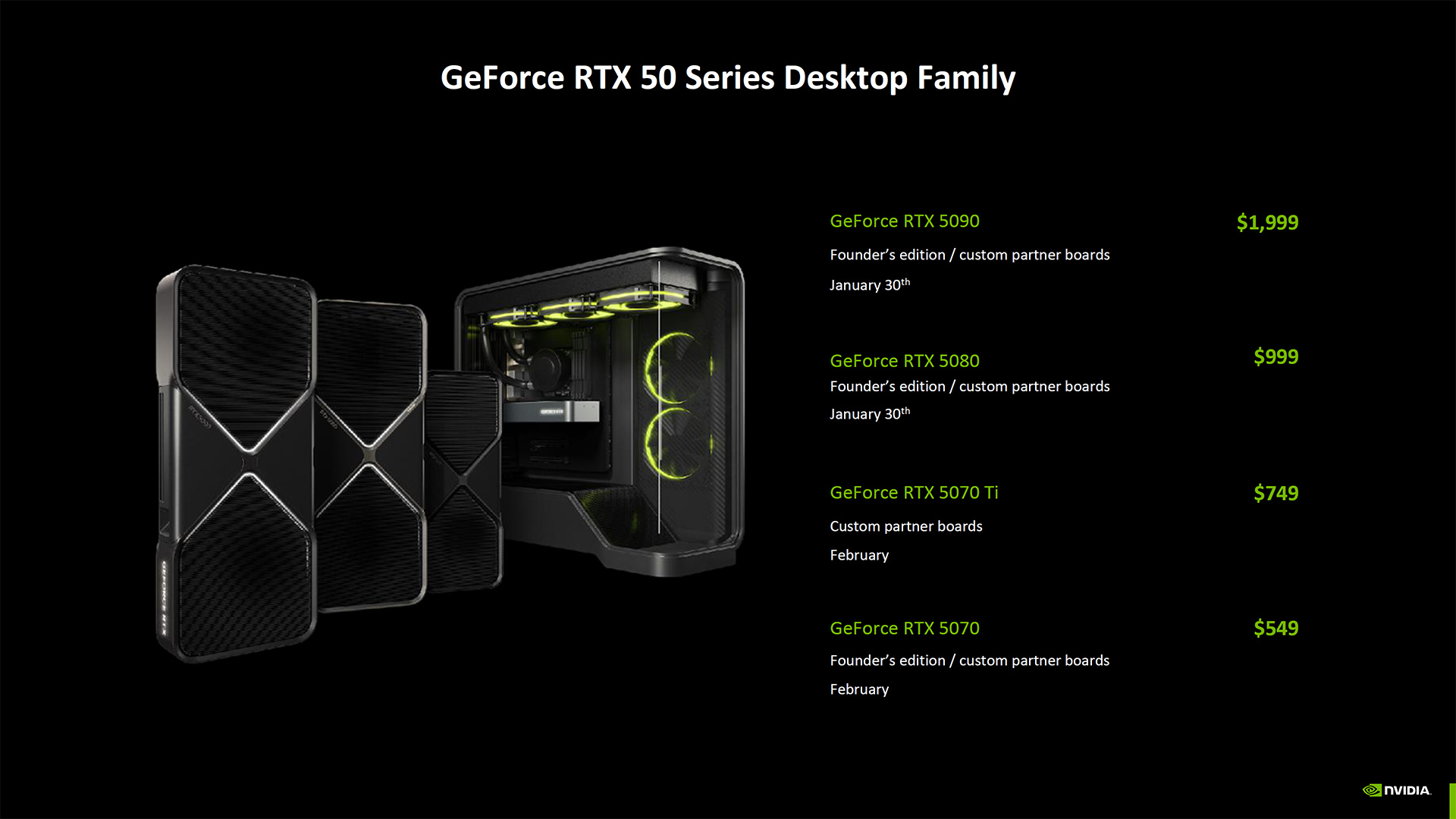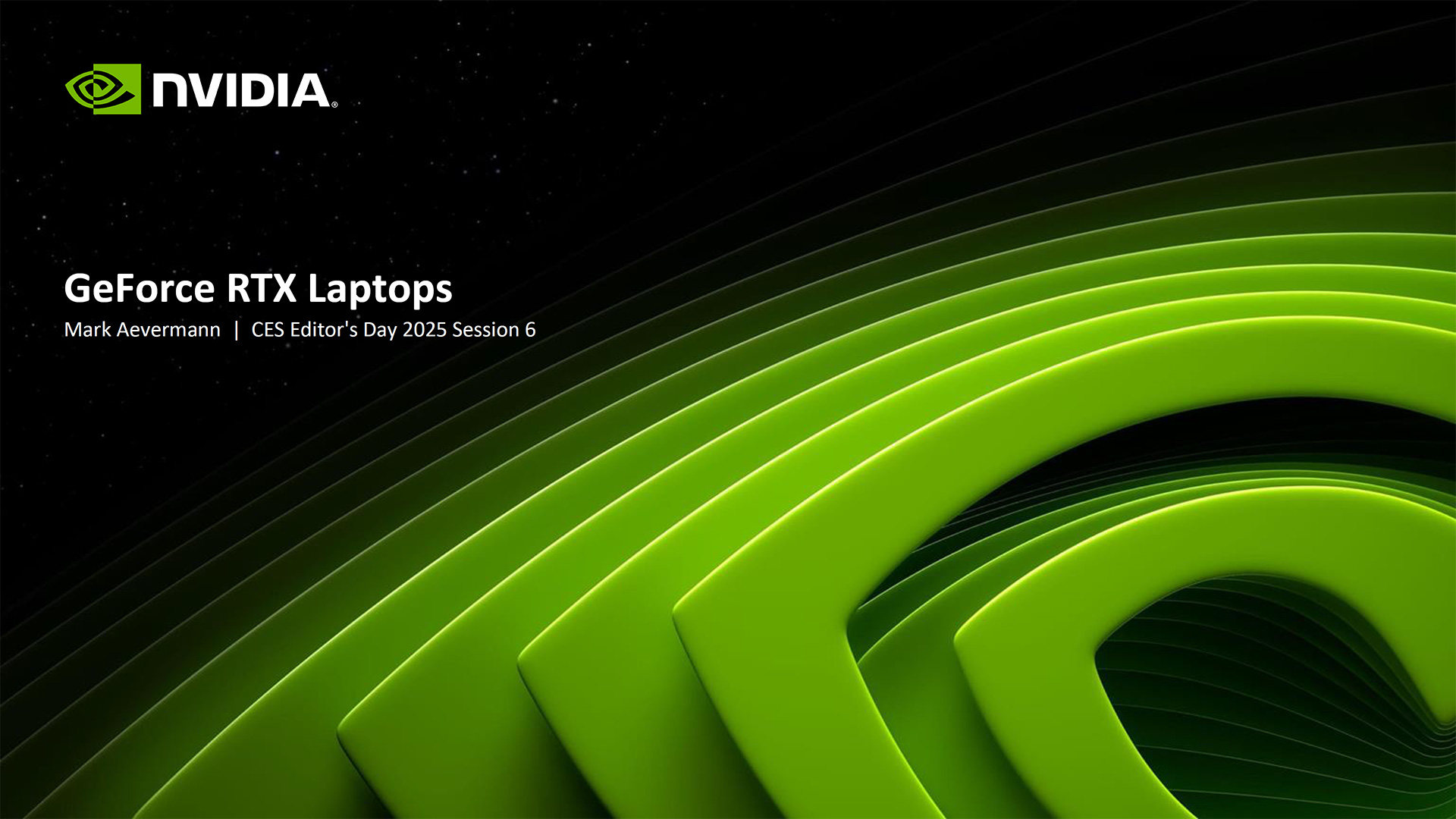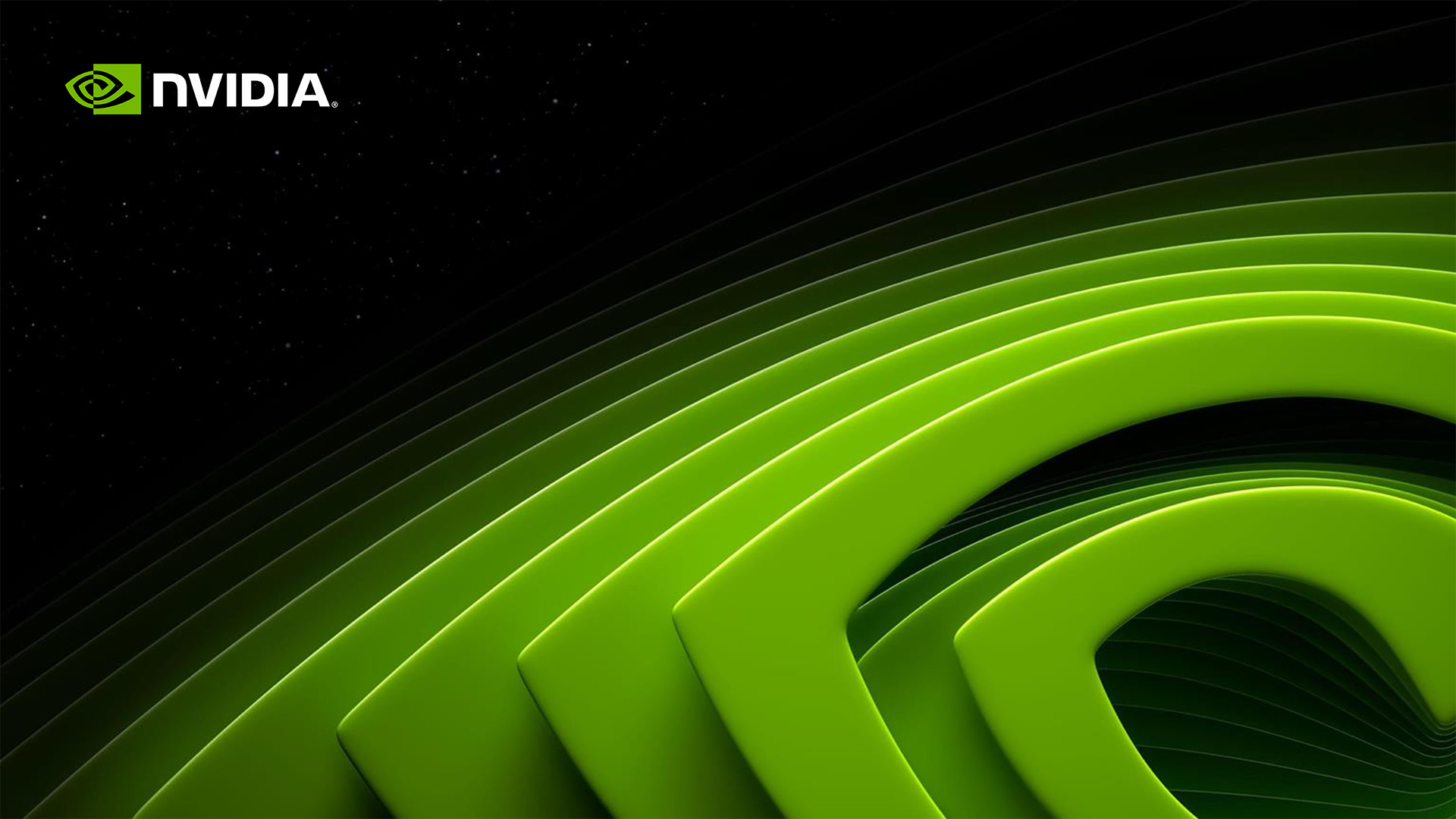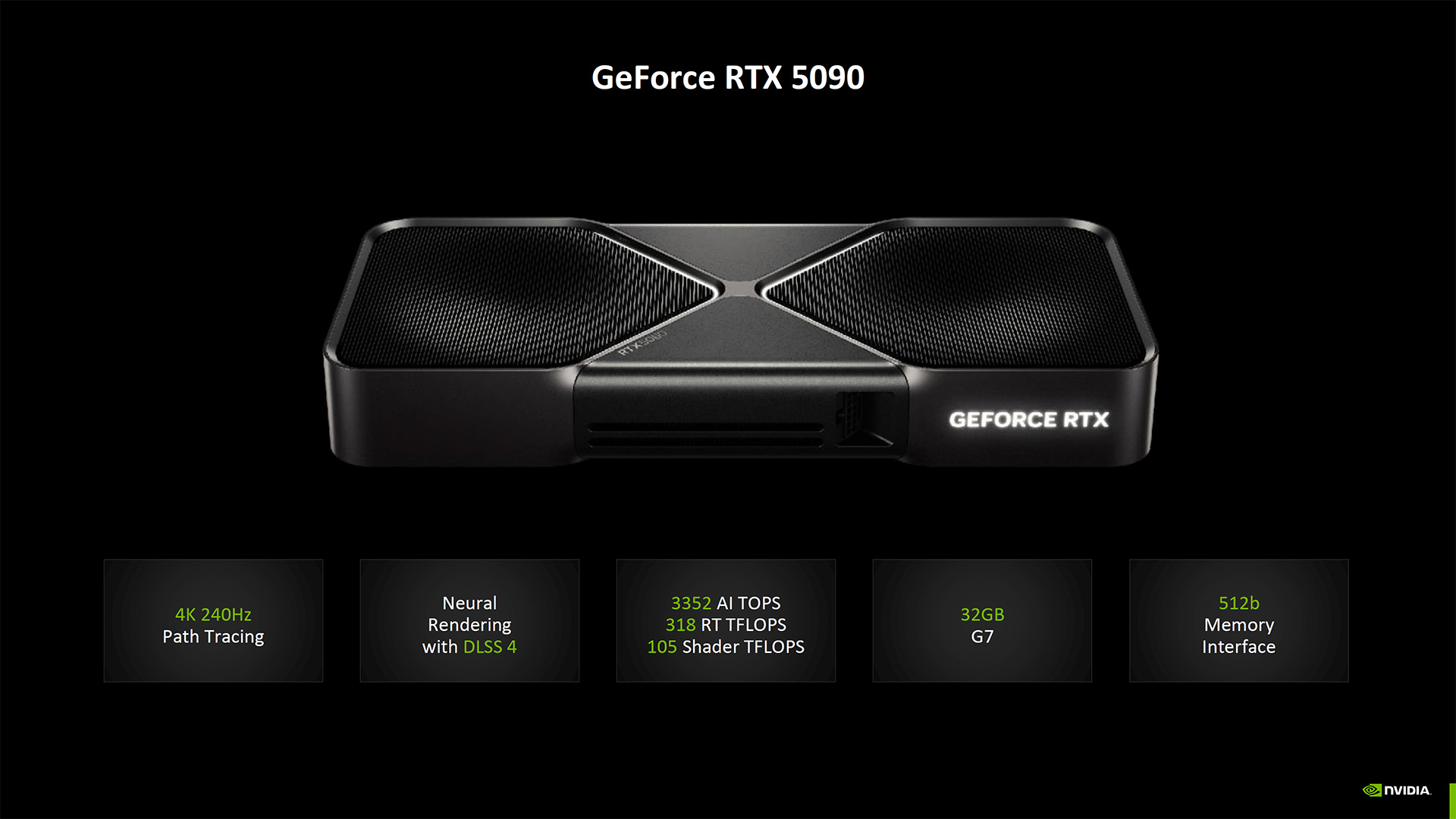
The Nvidia RTX 5090 Founders Edition is coming on January 30, 2025. There will also be an RTX 5080 Founders Edition launching on the same date, with an RTX 5070 Founders Edition coming in February. What about the RTX 5070 Ti? It's also coming in February, but without an Nvidia reference design — it's basically the same story as the RTX 40-series Founders Edition cards, with some slight tweaks.
Nvidia provided a full overview of the upcoming Founders Edition cards, along with a discussion of some of the underlying changes, during its Editors' Day on January 8. There was a lot of other information as well, and we have multiple other articles covering those topics: Nvidia Blackwell architecture, Neural Rendering DLSS 4, RTX AI PCs and generative AI for games, Blackwell for professionals and creators, and Blackwell benchmarking. But here, our focus will be on the reference cards and specs.
The full slide deck from the session is at the bottom of this article. We'll use some of those slides throughout our discussion.

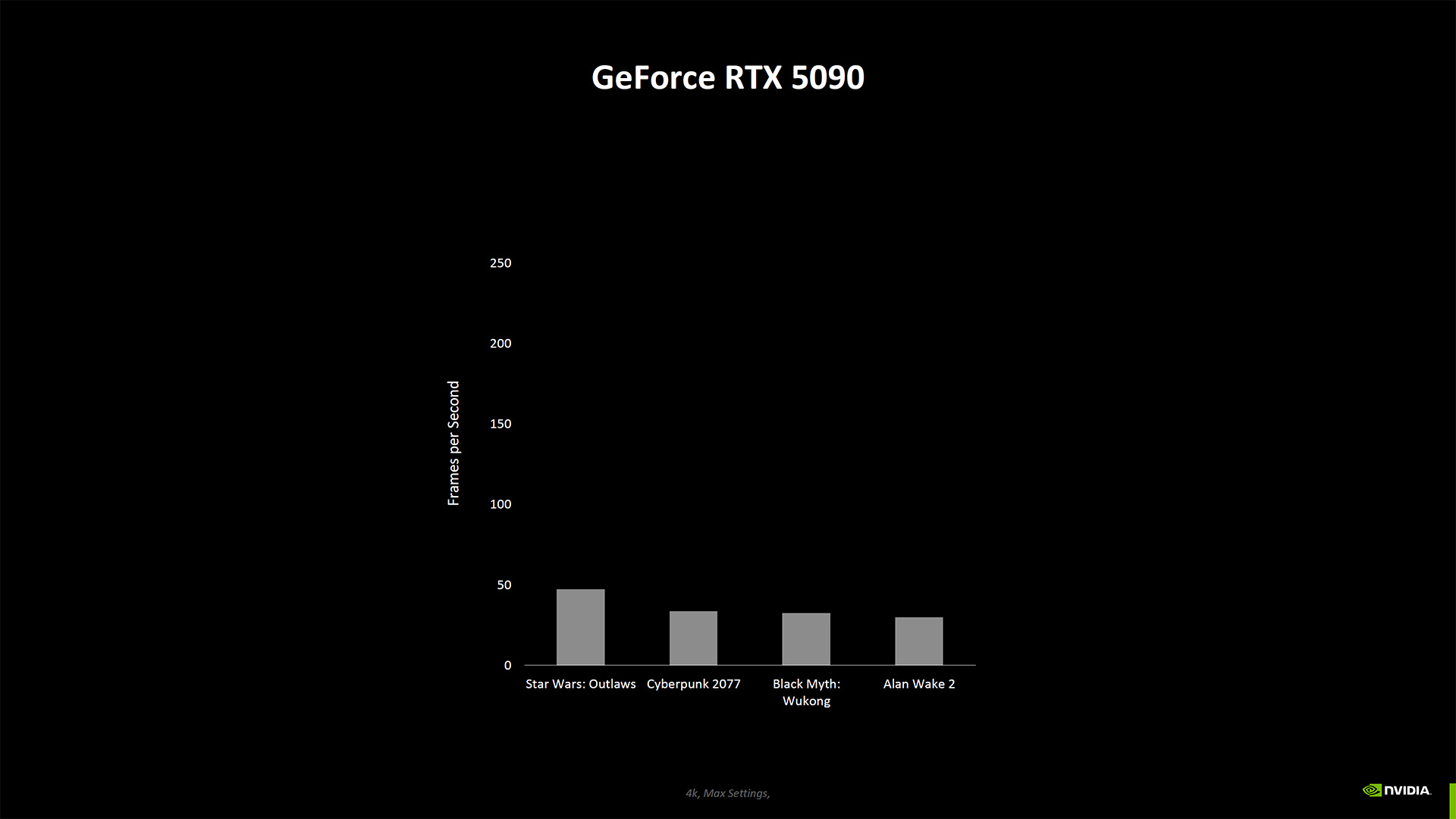
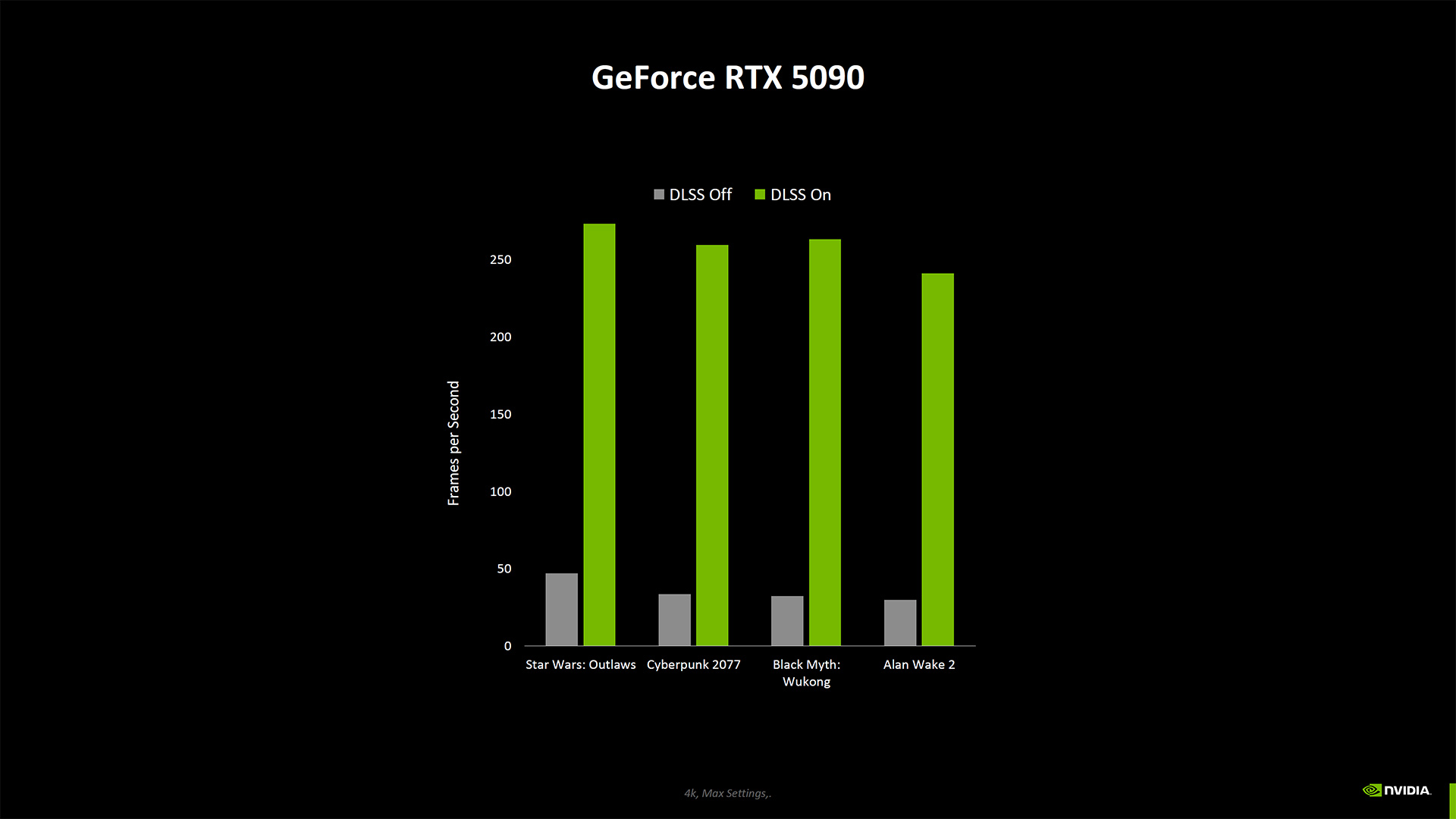
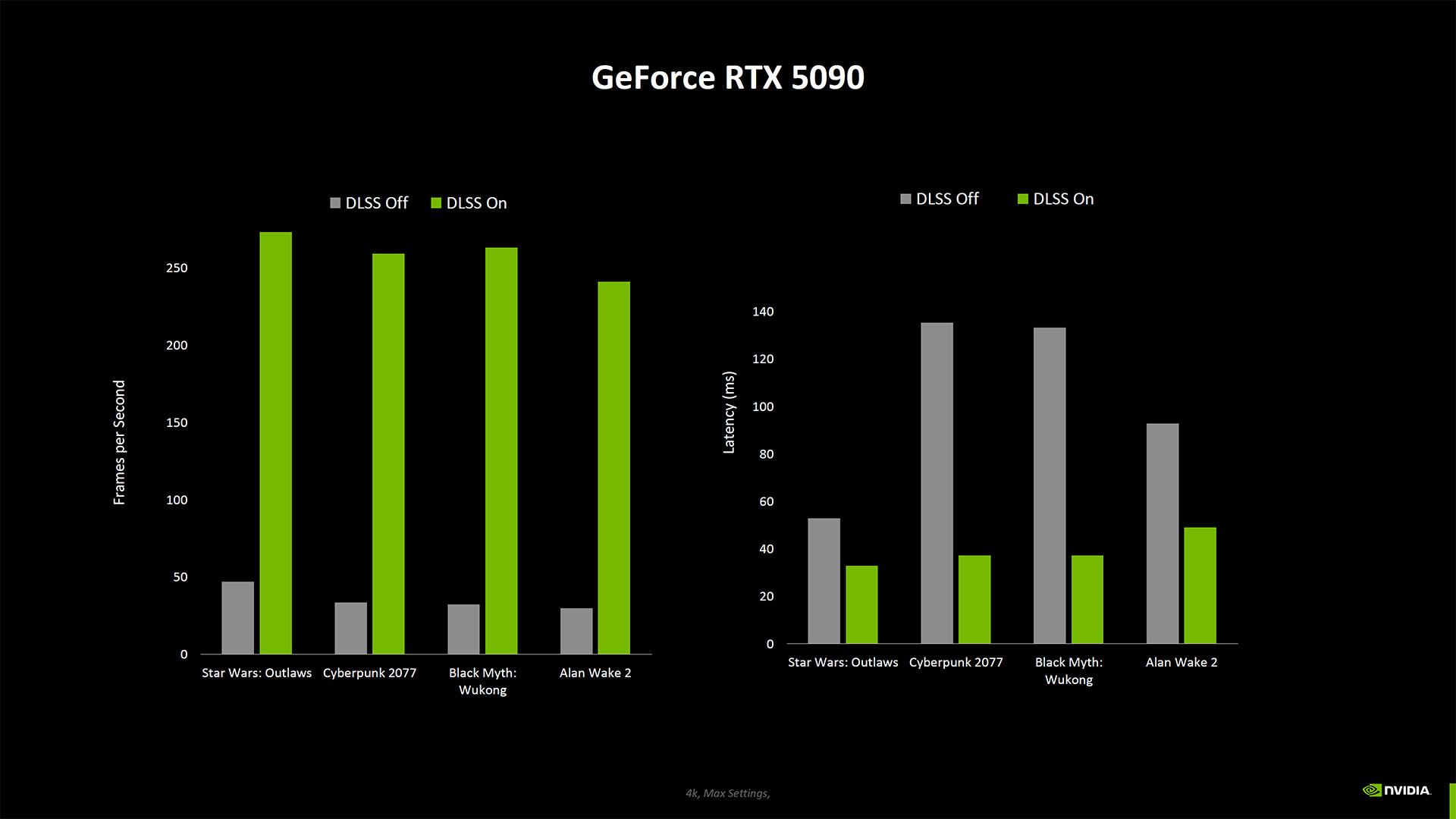
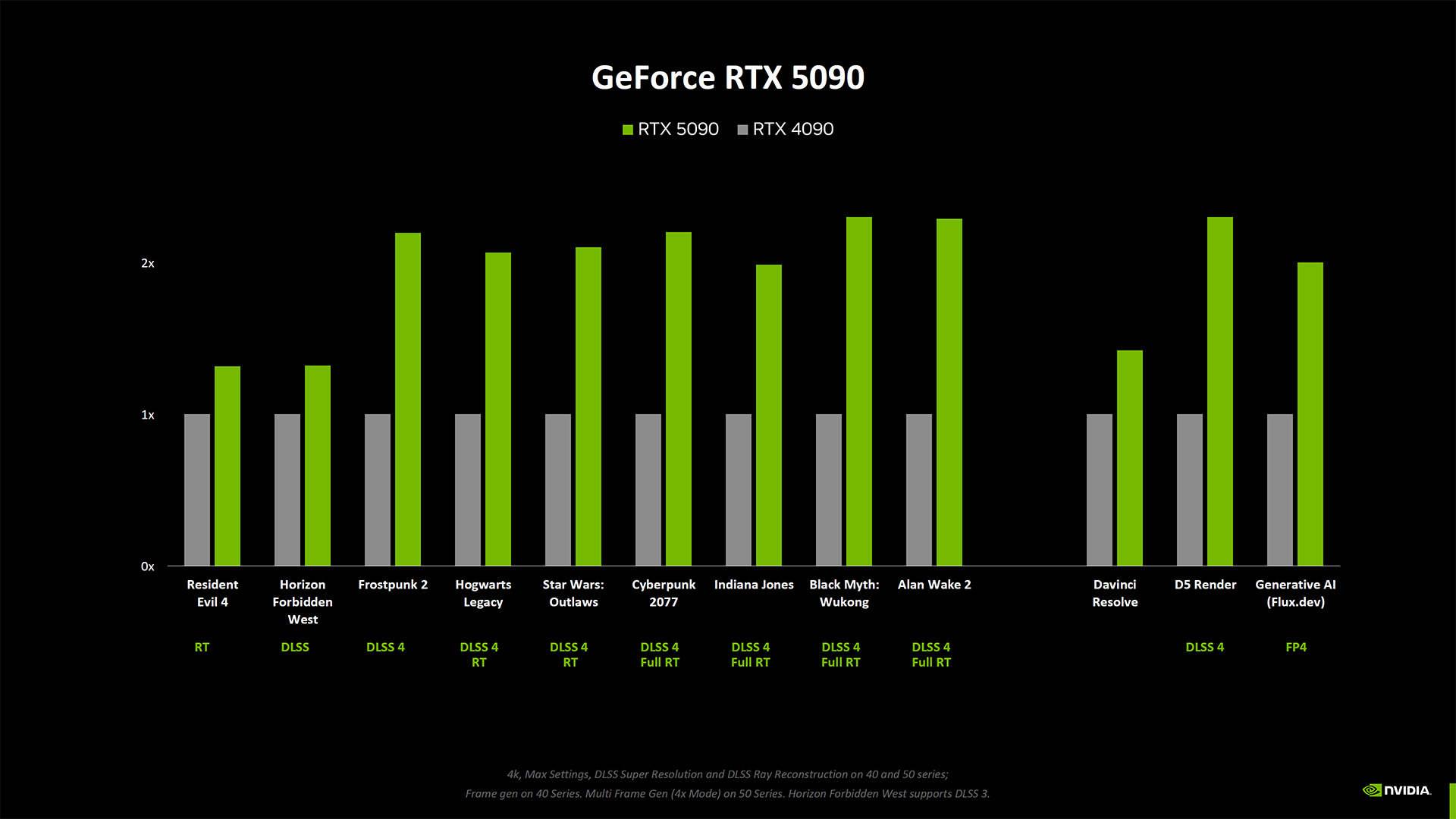
Starting with the RTX 5090 Founders Edition, one of the most striking aspects of the reveal was that it's a dual-slot graphics card with only two fans. How in the flaming underworld does Nvidia plan to cool a 575W TGP (Total Graphics Power) card with such a design? Answer: With some clever changes and large fans.
The high specs are well-known by now. RTX 5090 comes with 170 SMs (Streaming Multiprocessors), 3352 AI TOPS of FP4 compute, and 105 TFLOPS of FP32 for graphics. It also has 32GB of GDDR7 memory on a 512-bit interface, with a massive 1792 GB/s of bandwidth. And a 575W power limit, as noted above, coupled with a $1,999 price tag.
If you're looking at the price and thinking there won't be many gamers willing to fork over that much money for a graphics card, you're probably right. However, given the boosted AI capabilities and large quantities of VRAM and bandwidth, we suspect the RTX 5090 is going to sell like hotcakes. But let's look at the card a bit more closely.
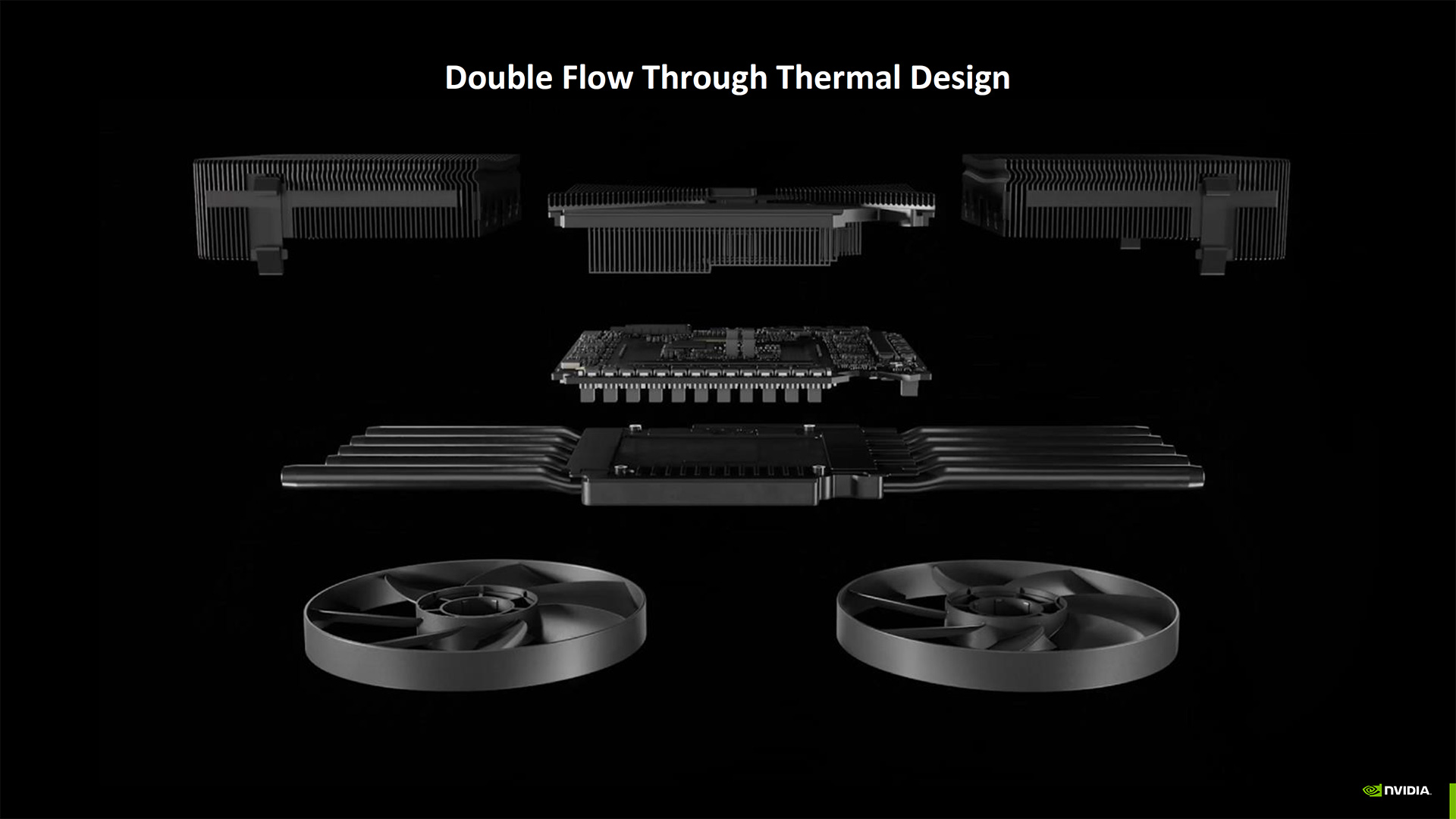
The biggest news is the double flow through thermal design. The RTX 4090 (and other Ada GPUs) featured a smaller PCB so that the back fan — the one furthest from the video ports and IO bracket — could blow straight through the radiator fins. With the 5090, Nvidia takes that same approach to the next level. The RTX 5090 PCB, as we wrote earlier, is very compact. Both the front and rear fans can now blow straight through the radiator fins.
How is this accomplished? Nvidia says the RTX 5090 features three different PCBs. There's one on the bottom for the PCIe 5.0 x16 slot connector and another small PCB on the IO bracket for the video ports. The main PCB connects to those via (presumably) ribbon cables that won't interfere with airflow.
How much of a difference does this make? Nvidia shared this slide of power versus noise for its older RTX 20-series (dual axial fans), the RTX 40-series (single flow through), and the RTX 5090 with double flow through:
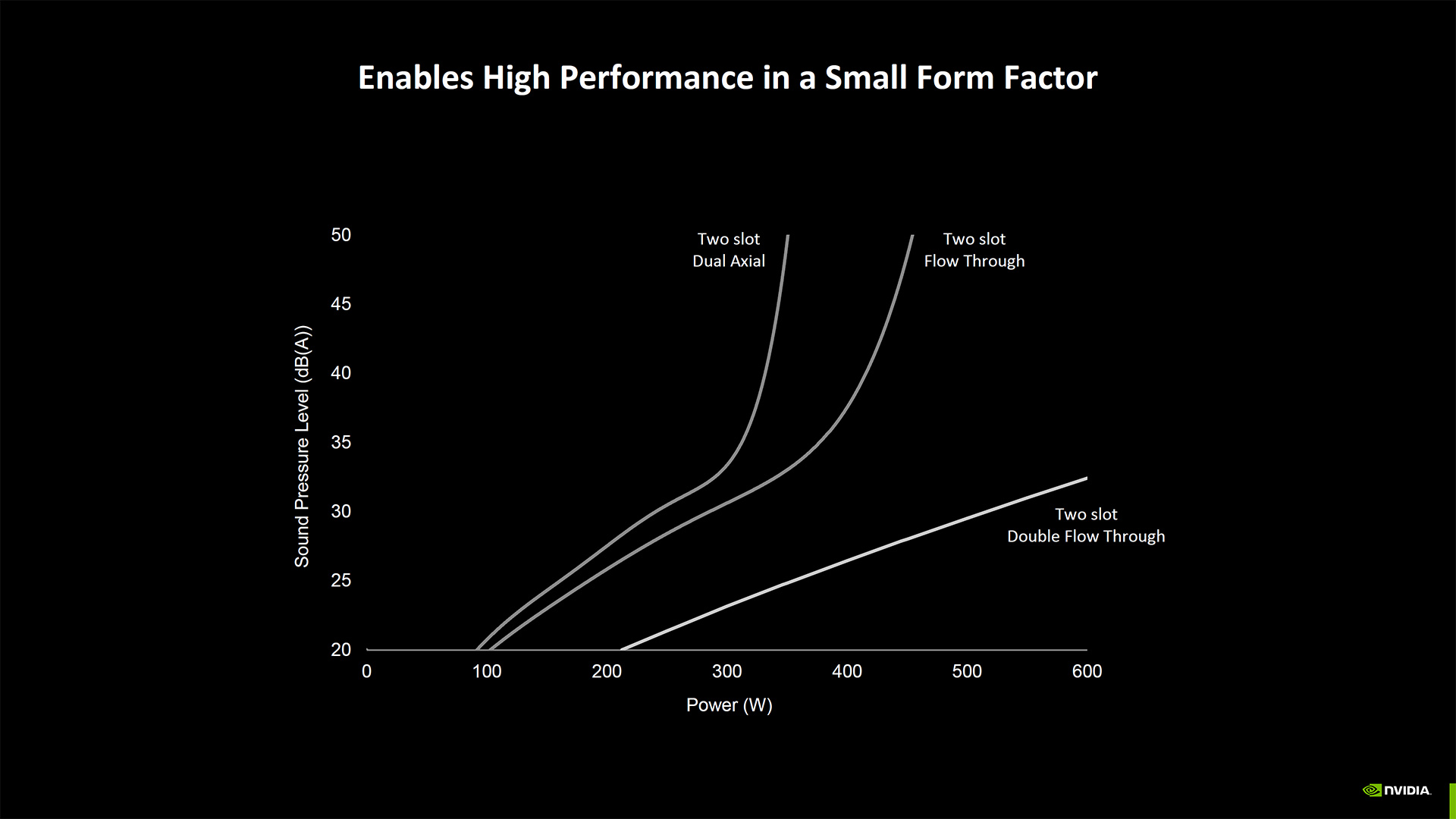
We'll be very curious to see how heat and noise fare in the real world. The 40-series Founders Edition cards have been very good, but the RTX 3090 and 3080 Founders Edition cards — and the RTX 3080 Ti Founders Edition in particular — could get very hot! The 4090 and 4080 cards got around that by having massive triple-slot coolers with large fans.
The RTX 5090 does have some help, though. The fans are still very large (120mm), and there are rumors that the 5090 at least uses liquid metal. Don't disassemble your graphics card, in other words. That's unofficial information, for now, but it could help with cooling such a power hungry card. Also, even though it's a dual-slot card, the 5090 Founders Edition is big and heavy. It's not quite as heavy as the 4090 FE, but it probably weighs in the vicinity of 3.5~4.0 pounds, I'd guess, and it's relatively tall for a dual-slot card.
Not quite as readily visible is that the RTX 5090/5080/5070 Founders Edition cards also have a bit of a divot in the radiator fins. This is presumably to enable better airflow and cooling, somehow, though Nvidia didn't provide much in the way of details on why this was done.
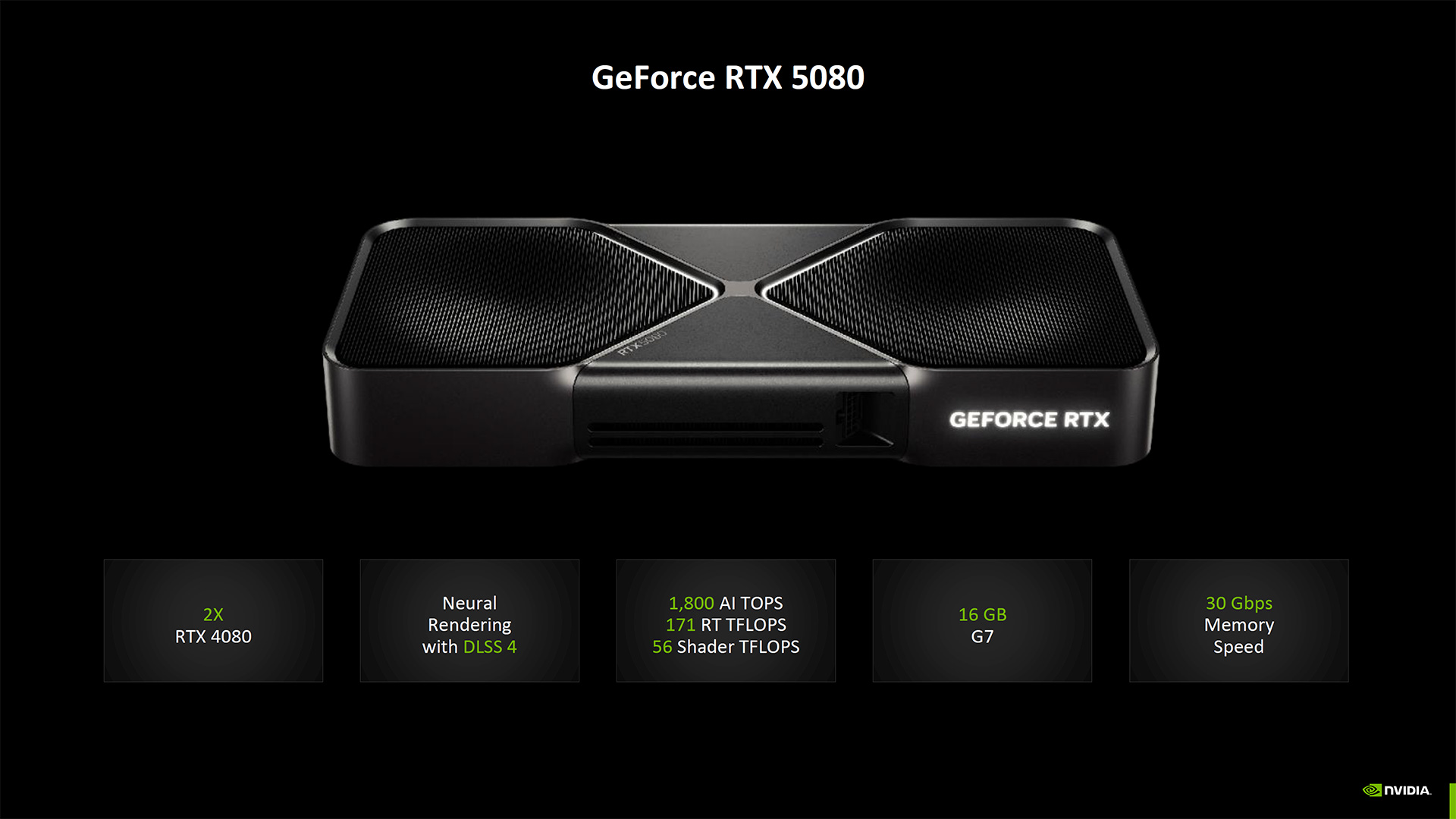
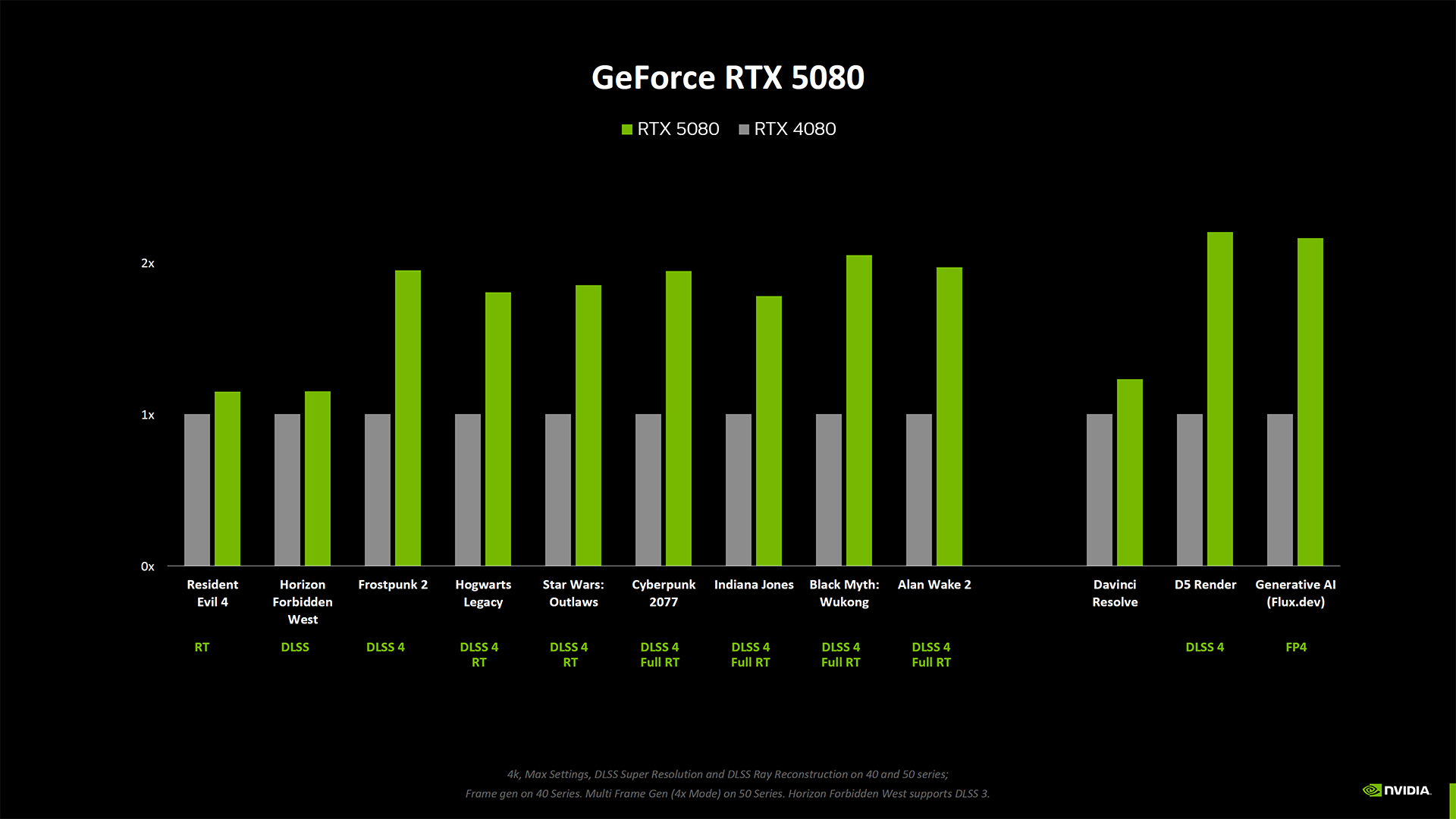
The aesthetics of the RTX 5080 Founders Edition are virtually identical to the 5090 FE, just smaller. Of course, under the hood there's a very different set of hardware. Full specs include 16GB of GDDR7 memory clocked at 30 Gbps, for 960 GB/s of bandwidth — almost matching the RTX 4090! It has 84 SMs and 10,752 CUDA cores, with 58.1 TFLOPS of FP32 compute and 1800 AI TOPS of FP4 performance.
The card isn't quite as heavy or large as the RTX 5090, understandably, but it uses the same double flow-through design as far as we know. TGP for the RTX 5080 is 'only' 360W, just a bit more than the old RTX 3090 and 40W more than the RTX 4080 Super. Considering it uses the same basic design as the 5090, we assume this will end up being a very cool running card, similar to the RTX 4080 and 4080 Super — but more compact.
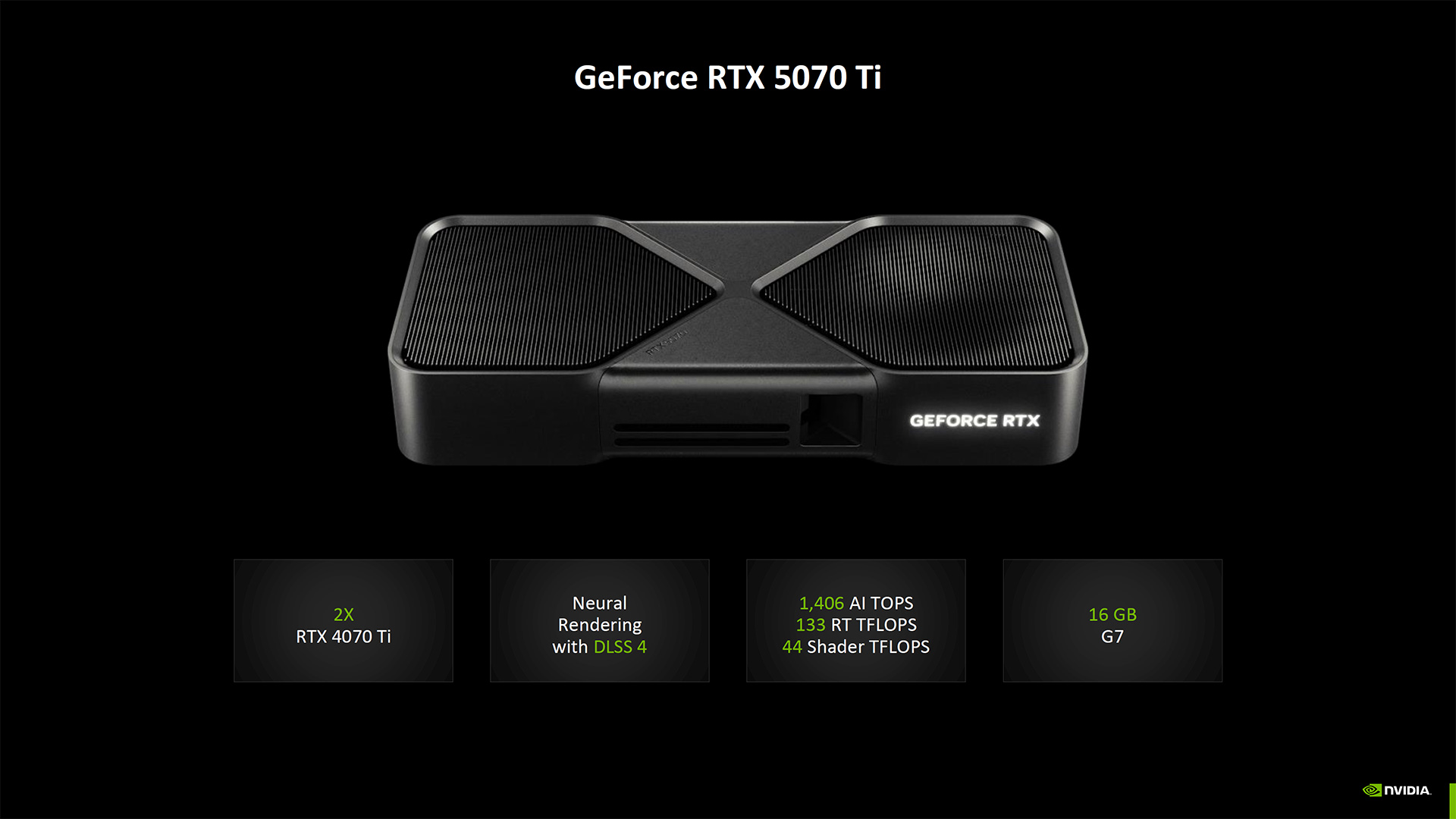
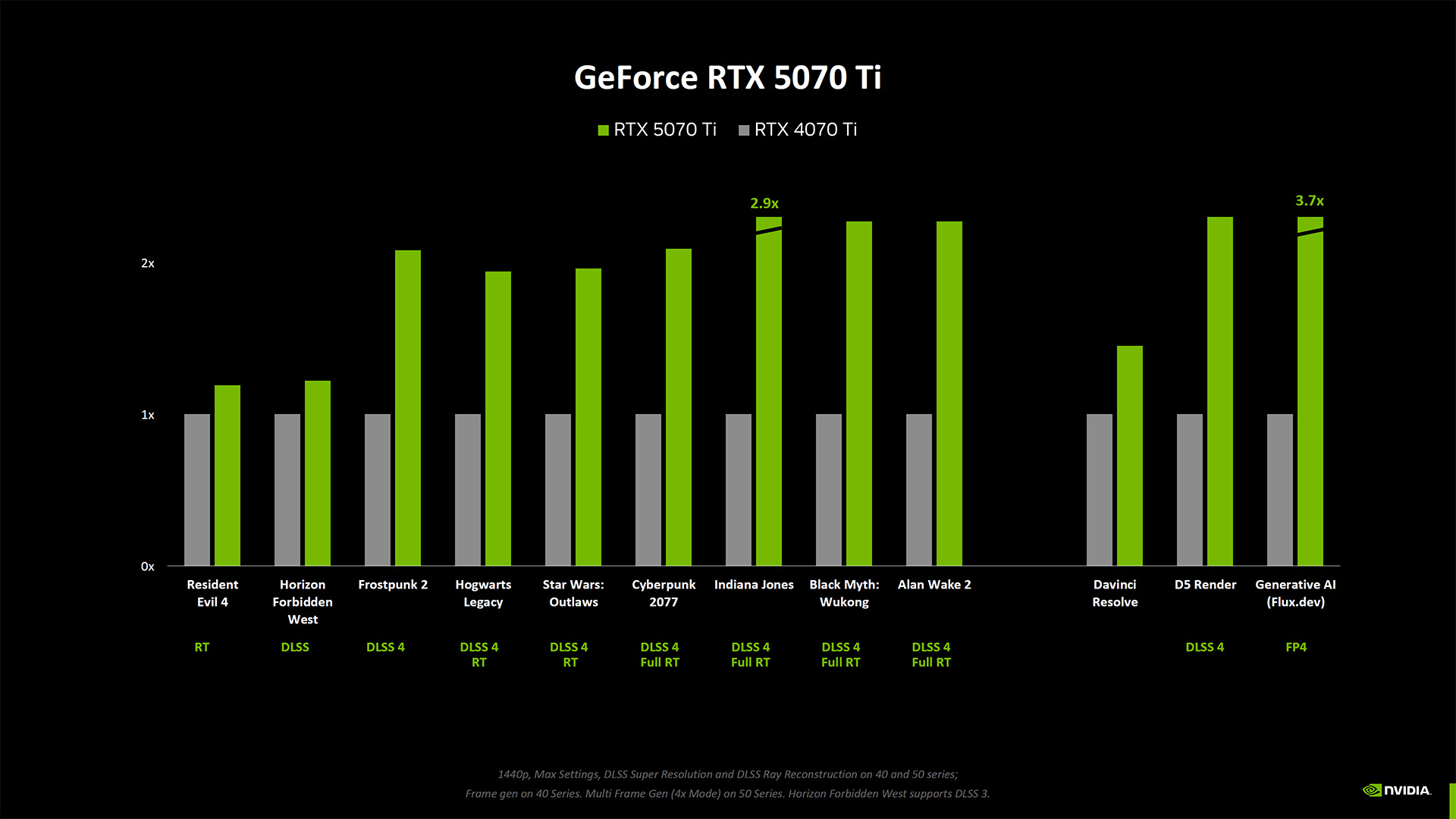
Despite the image shown above, there's no RTX 5070 Ti Founders Edition — it's purely a render for informational purposes. Think of it as a way of Nvidia not favoring any of its partner cards, as it could only put one on the slide. (Yeah, it could have been more images of small cards, but that's beside the point.)
The specs on the RTX 5070 Ti actually look really attractive. It has the same 16GB of GDDR7 memory, clocked just 7% slower at 28 Gbps. That's still 896 GB/s of bandwidth. It also has 1406 AI TOPS of FP4 compute, with 70 SMs, so it's 83% of the larger 5080 for 75% of the price. Power also drops to 300W.
We did see some partner RTX 5070 Ti cards at Nvidia's showcase. If memory serves, they're pretty much all 2.5 to 3.0 slot cards with triple fans, probably without a double flow-through design — but the single flow-through fans of the prior generation have proven effective, particularly with large radiators and three fans.
The marketing is strong with the 50-series, as usual. The provided benchmarks show a sizeable improvement over the RTX 4070 Ti... but Nvidia didn't use the newer and more potent RTX 4070 Ti Super. It also uses MFG where applicable to show significant gains in "performance."
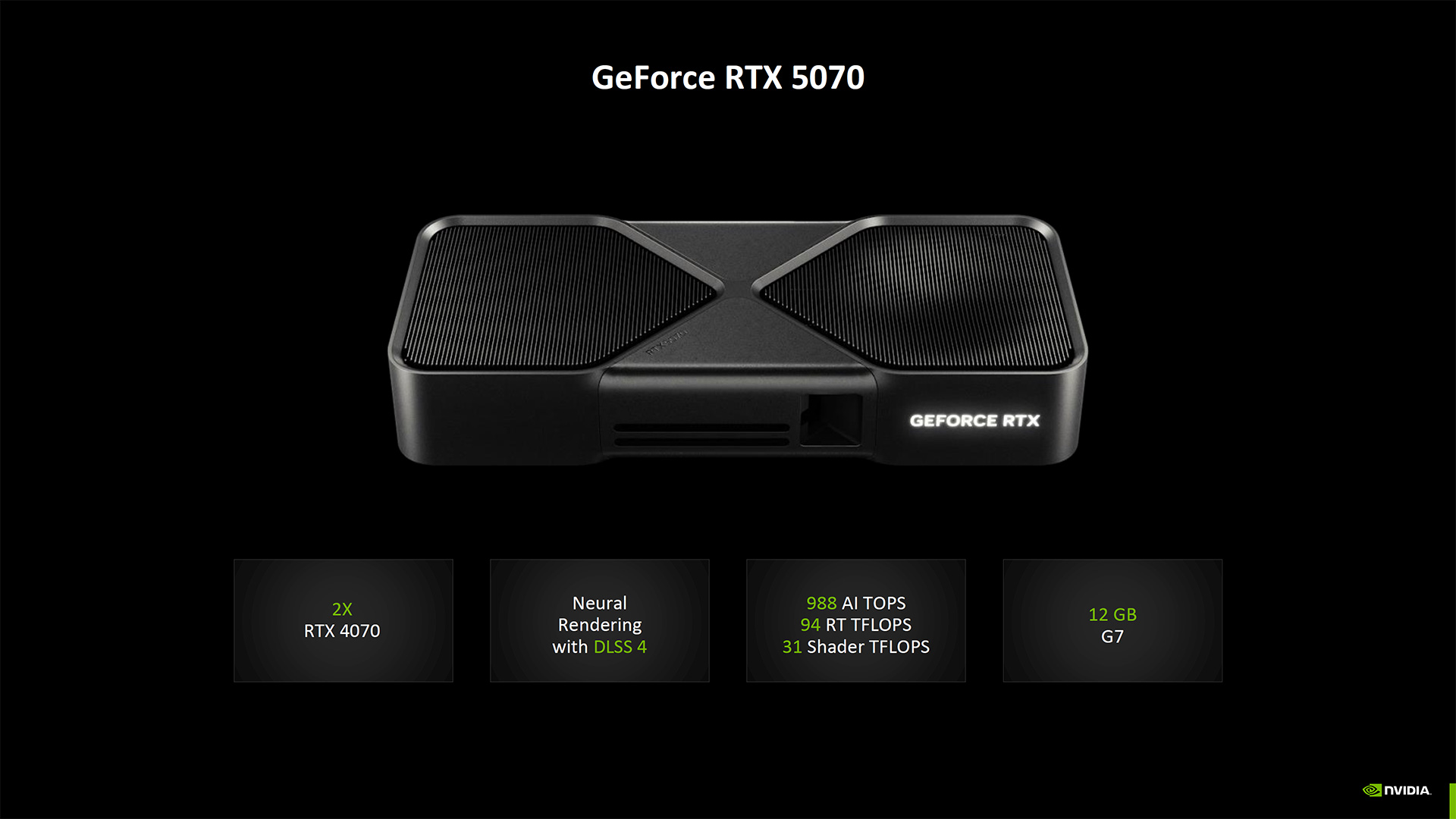
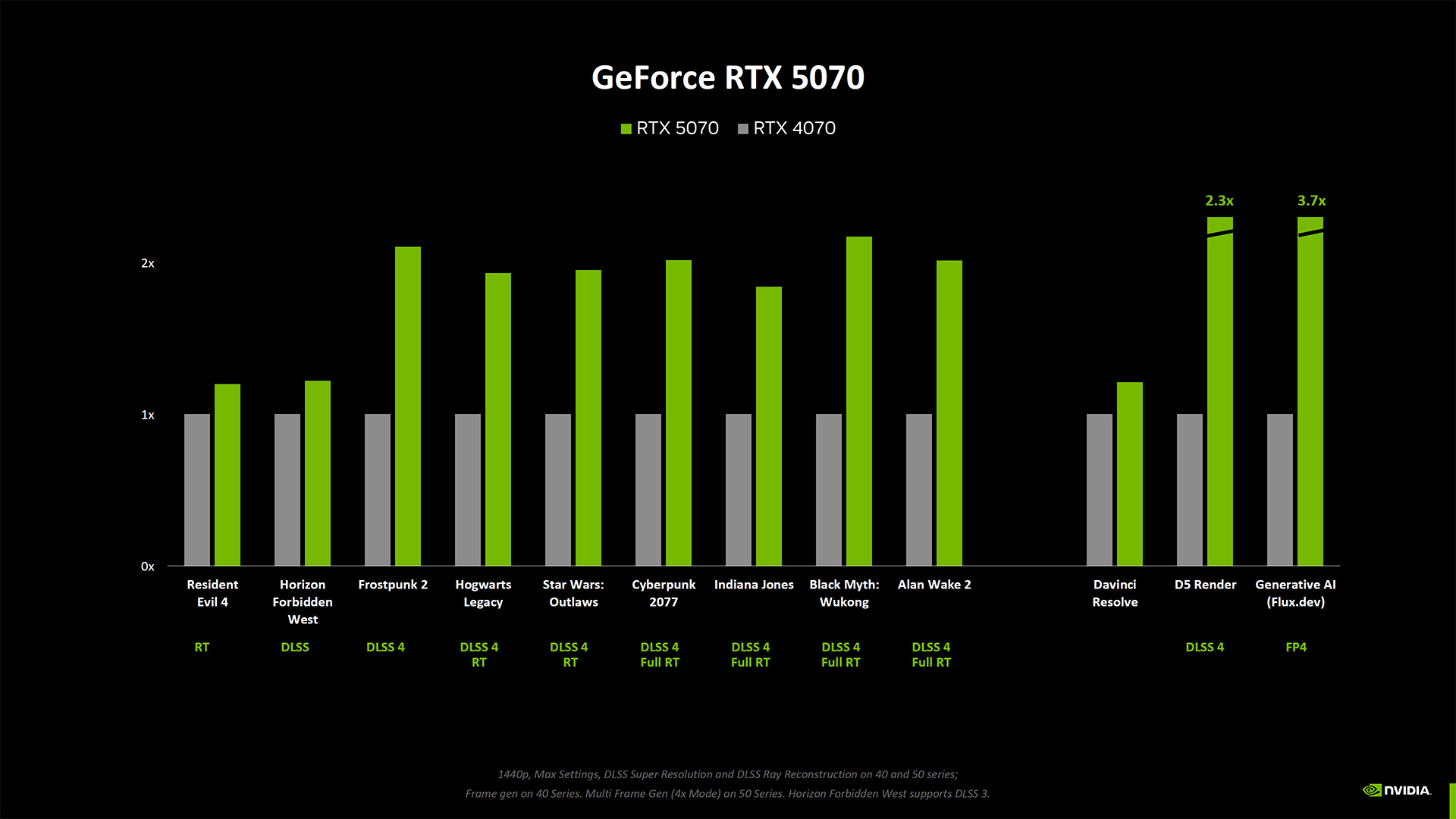
Finally, we have the RTX 5070 Founders Edition. Our understanding is that this will have a single flow-through fan, like the previous generation, but it also only needs to deal with a 250W TGP. It's a smaller dual-slot card as well. There's only a single divot in the radiator for the flow-through fan as well.
Specs include 48 SMs, 6144 CUDA cores, 12GB of GDDR7 memory clocked at 28 Gbps for 672 GB/s of bandwidth, and 988 AI TOPS of FP4 compute with 30.9 TFLOPS of FP32 for the shaders. That's only 6% more compute than the RTX 4070 (ignoring FP4 vs FP8 AI performance).
And indeed, Nvidia's own performance figures, discounting MFG, suggest relatively modest gen-on-gen gains. The 5070 appears to be around 20% faster than the 4070 in Resident Evil 4 and Horizon Forbidden West. It's only with the extra generated frames that the performance improvements hit the claimed 2X faster, and we're still waiting to see what that actually feels like. (Hint: It won't be the same as a real, non-generated 2X improvement!)
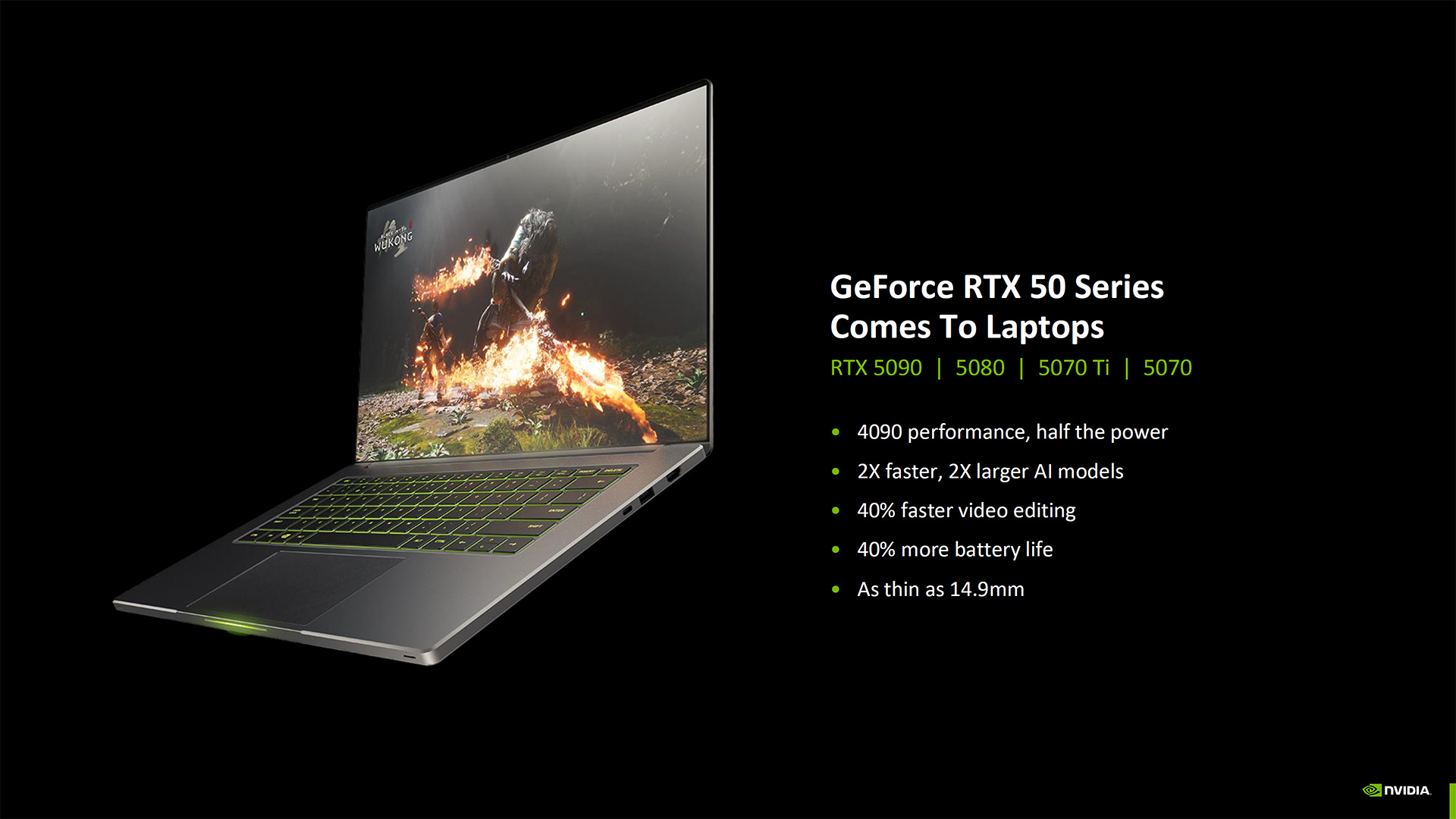

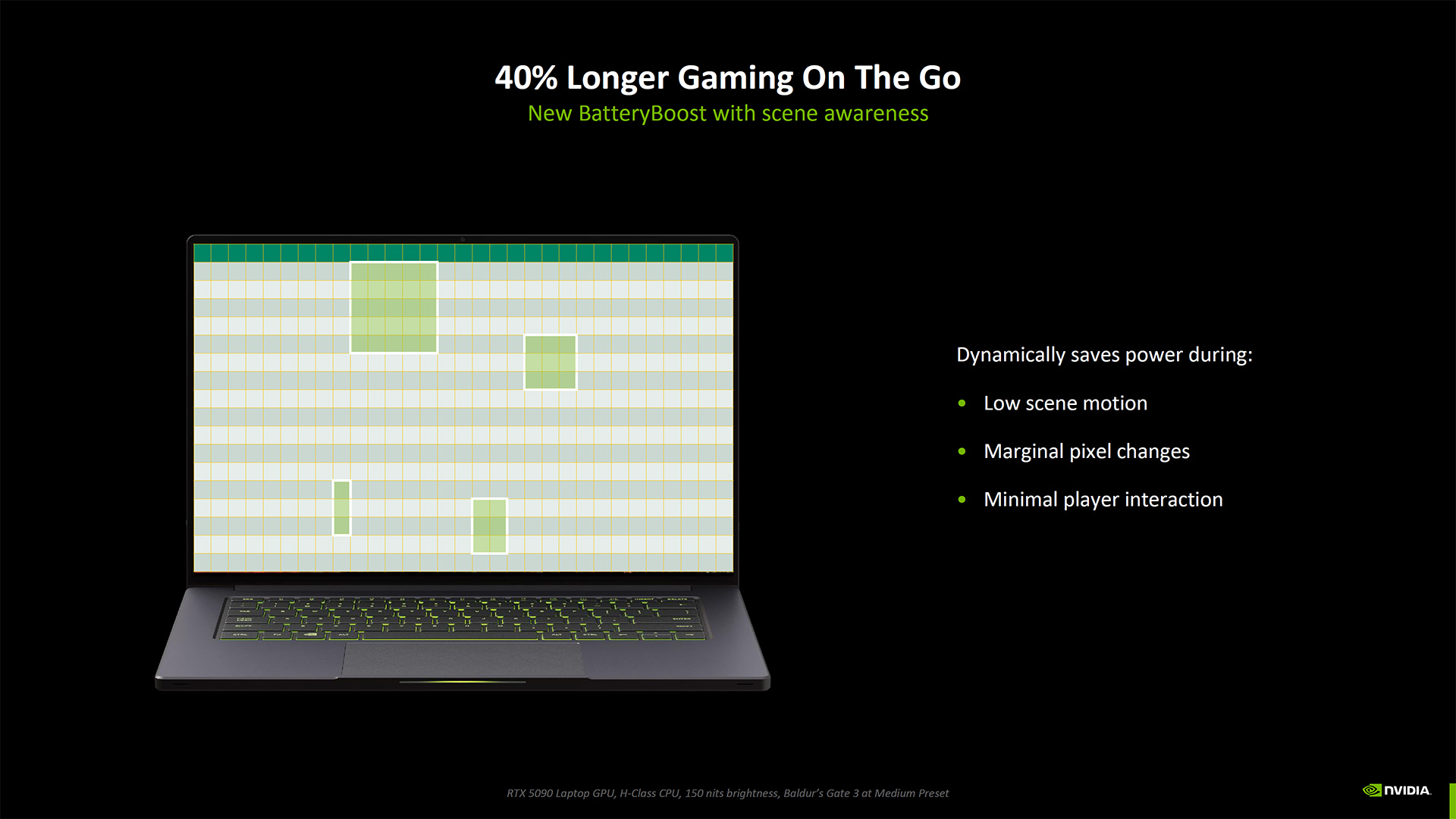
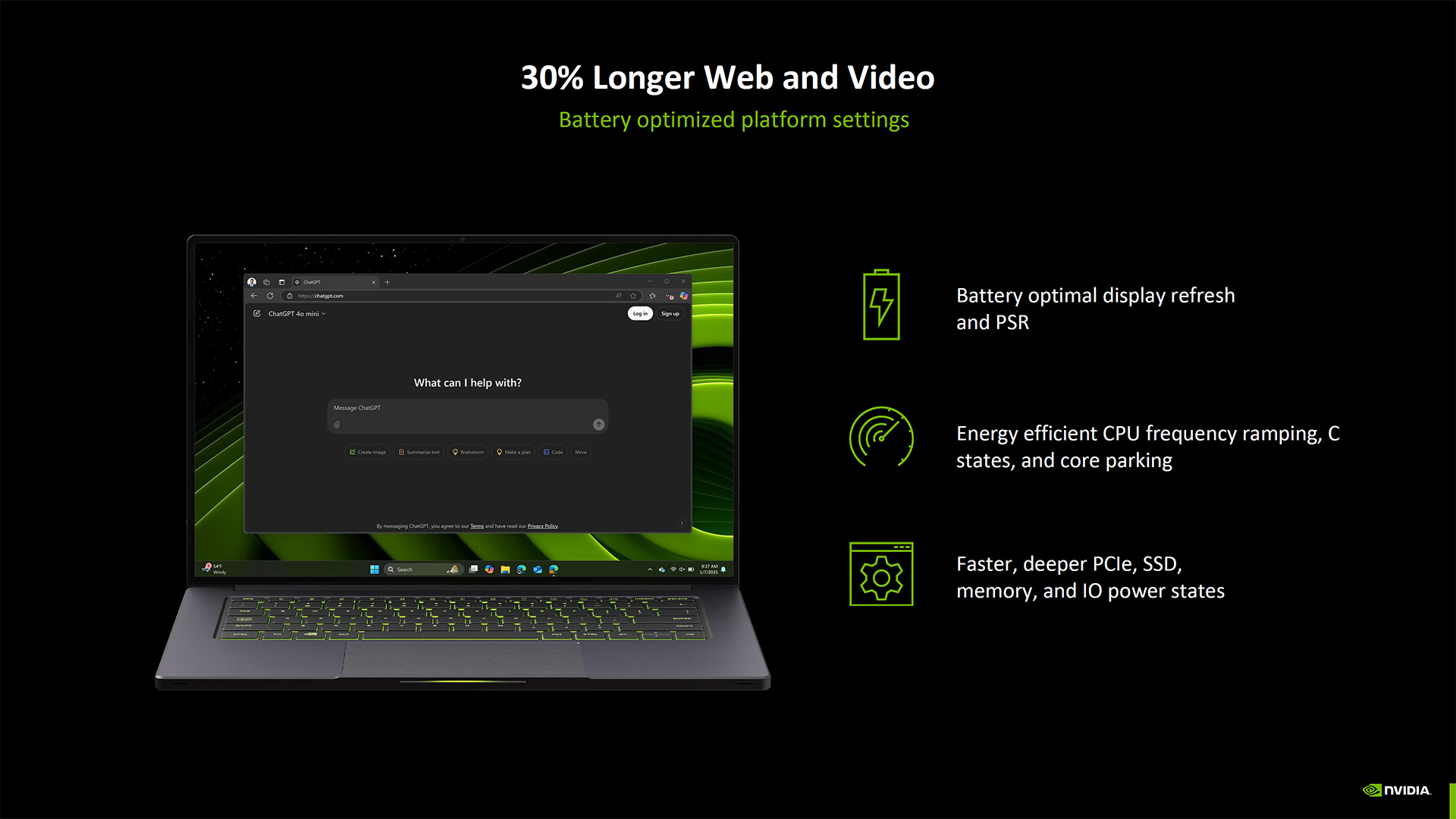
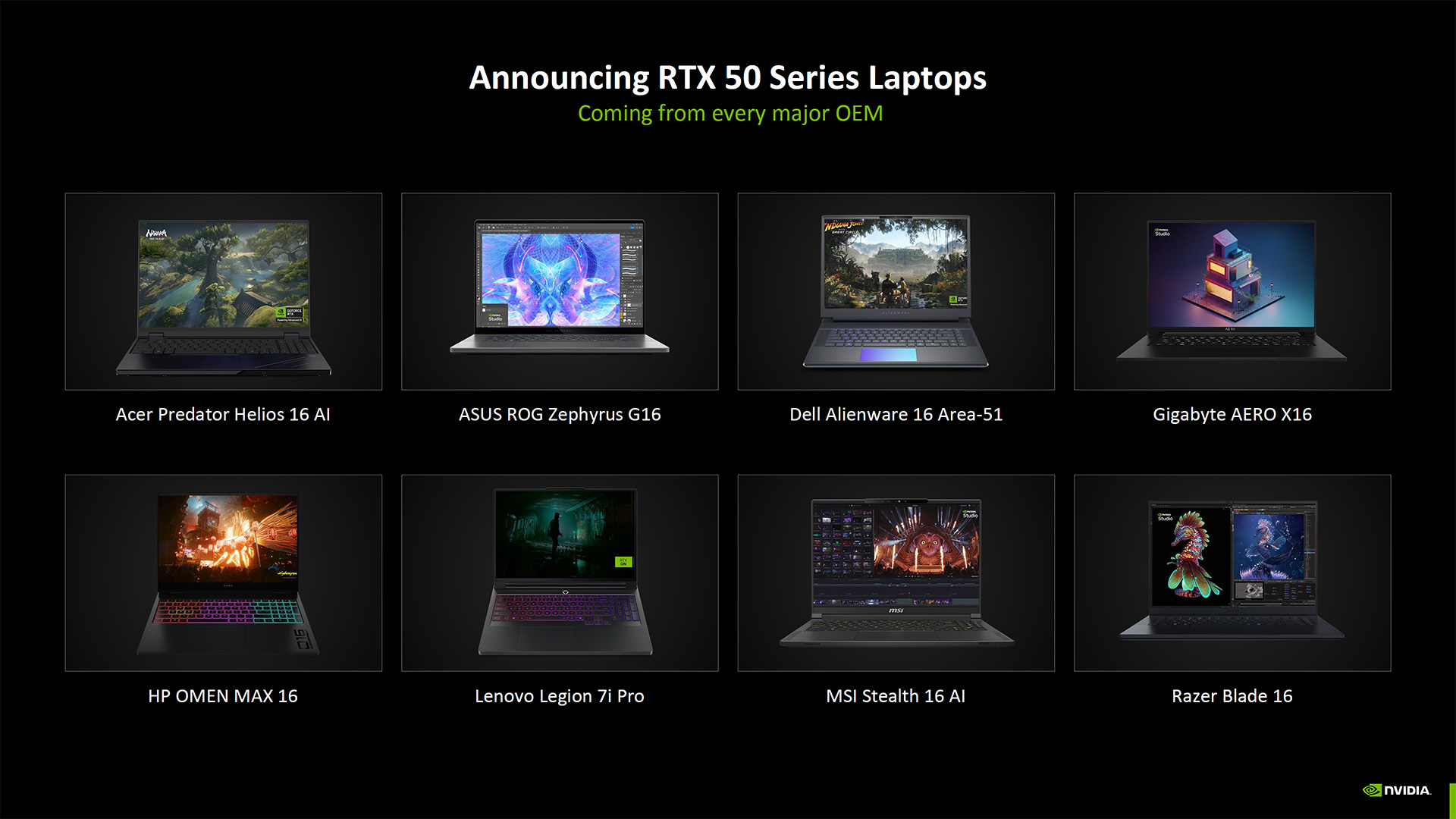
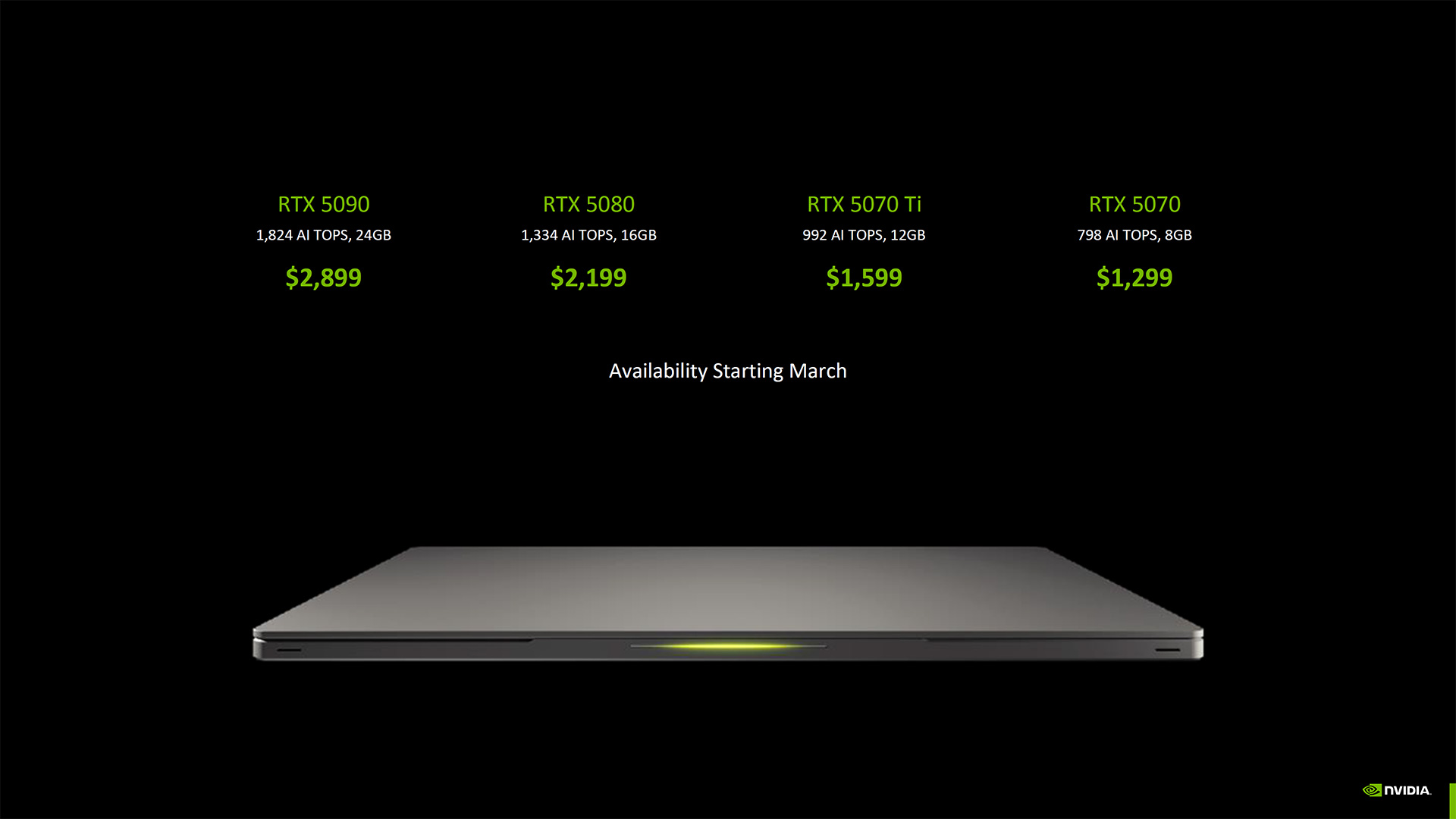
Nvidia also revealed the RTX 50-series laptops, which in all cases correspond to the desktop cards that are one step down. So the RTX 5090 laptop GPU basically has the same hardware as the RTX 5080 desktop card — except, curiously, it has 24GB of VRAM, apparently via 3GB GDDR7 chips. (So that's where those chips are hiding...)
The RTX 5080 laptop GPU has 16GB of memory on a 256-bit interface, with 7680 CUDA cores, so it's slightly less than the desktop RTX 5070 Ti. The mobile 5070 Ti comes with 12GB on a 192-bit interface, matching up with the desktop 5070, and then there's the mobile RTX 5070.
The RTX 5070 laptop GPU will have 36 SMs and 4608 CUDA cores, with only 8GB of GDDR7 memory on a 128-bit memory interface. Please insert a very deep sigh. This is basically a very strong hint of what we are likely to see from the future desktop RTX 5060 Ti and RTX 5060. There's still some hope that the 5060 Ti might come with 3GB chips to get to 12GB total VRAM, but otherwise, it looks like a strong confirmation that Nvidia isn't giving up on 8GB yet.
Will neural rendering and neural texture compression come to the rescue of the 8GB cards? From talking with Nvidia representatives, that will require game publishers opting in at the very least and, more likely, some developer effort to allow that to happen. But we'll wait and see.
The laptop 50-series GPUs will begin shipping in retail products in March. Here's the full GeForce RTX 50-series slide deck.
